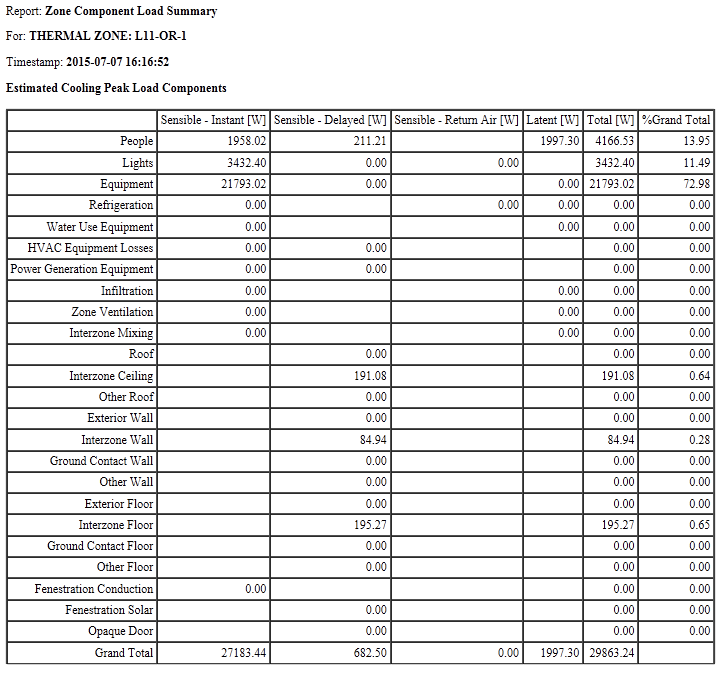I have internal zones with high ACH ventilation requirements. The internal loads are relatively small, and the amount of ventilation provided should create a reheat load that’s required to meet the zone heating setpoint. After running a few simulations, I’m finding that the zone is continually forced into a cooling condition and the supply airflow increases well above the ventilation requirement to meet the zone cooling setpoint.
The peak cooling sensible heat gain component report shows a large heat gain associated with ‘Opaque surface conduction and other heat addition’ that seems to be creating a cooling condition in the zone. Additionally, the 'Annual and peak values - other' report under 'energy meters' shows a Cooling:EnergyTransfer:Zone with a large minimum value. Hourly reports of the surface inside face heat gains show minimal load, well below the values reported above.
My walls are a standard, low mass ‘internal wall’ type and are surface matched to adjacent interior walls. My interior ceiling and floor are also low mass internal constructions with an adiabatic boundary condition.
The air-side ventilation should be more than enough to remove the internal load from the space yet it appears some surfaces are transferring, or storing and releasing a tremendous amount of heat to the zone. Has anyone experienced unusual results associated with internal zone energy transfer? Any more insight regarding the Cooling:EnergyTransfer:Zone value?








